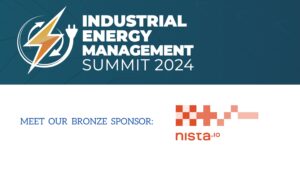Virtual power purchase agreements (VPPAs) have emerged as an innovative way for corporations to procure renewable energy. By contracting offsite projects remotely, Virtual PPAs allow companies to source clean power without major onsite investments. This approach offers considerable advantages. However, it also poses unique risks and challenges compared to traditional electricity procurement.
In this comprehensive guide, we will examine the key benefits driving the adoption of virtual PPAs. Furthermore, we will see the major pitfalls and considerations businesses must weigh. Understanding the promise and potential perils of VPPAs enables informed decision-making for corporate renewable energy buyers. So, let’s get started.
An Introduction to Virtual PPAs
Before analyzing the pros and cons of virtual PPAs, it is important to understand what exactly they are and how they work. A virtual PPA is a financial contract between a corporation looking to buy renewable energy and an offsite project developer. The key elements include:
- The corporate buyer agrees to purchase a portion of the project’s electricity output. So, this is handled financially rather than physically.
- The developer sells their power into wholesale electricity markets.
- The buyer receives renewable energy certificates (RECs) equal to the contracted volume. Moreover, RECs certify usage of the clean energy.
- The two parties exchange payments. It is based on the differences between the fixed VPPA price and fluctuating wholesale electricity prices.
So rather than directly consuming the renewable power, the buyer obtains financial hedge value. It is against the energy market price volatility. Moreover, RECs enable them to claim the usage of clean energy for sustainability reporting purposes.
Virtual PPAs emerged in the last decade as an alternative to physical, onsite power purchase agreements. They provide similar economic outcomes. It is to support renewable growth without major onsite investments. So, by contracting larger offsite projects, buyers can scale clean energy usage more flexibly.
With this background, let’s explore the primary benefits that make virtual PPAs so appealing to corporate energy buyers.
The Major Advantages Driving Adoption of Virtual PPAs
It is a relatively new approach, however, virtual power purchase agreements offer clear advantages. These explain their rising popularity. So, the main benefits include:
Accessing Renewable Energy Without Onsite Projects
The defining feature of virtual PPAs is that they allow companies to source clean electricity without installing onsite generation assets. So, this removes key barriers like limited roof space for solar panels or lack of wind resources.
Firms without suitable facilities for onsite renewables can now procure offsite projects remotely. For example, retailers and technology companies that lease their buildings cannot construct their assets. So, even businesses with owned real estate can complement onsite generation with VPPAs for greater flexibility.
By tapping into external renewable energy projects, buyers sidestep the challenges of onsite development. As a result, this expands their procurement options beyond their rooftops or property.
Avoiding Major Capital Investments
Constructing renewable systems like rooftop solar or wind turbines requires major upfront capital expenditures. It typically costs several million dollars per megawatt of capacity. However, virtual PPAs allow buyers to contract offsite projects with minimal incremental investment beyond contract costs.
Rather than a capital project, VPPAs represent an operating expense. This is much easier for companies to digest and approve. Moreover, this frees up capital that would otherwise be tied up in onsite renewable assets. So, lower costs and financial barriers support faster adoption of clean energy.
Accessing Larger-Scale Renewable Projects
Onsite generation is inherently limited in scale. This is due to the available physical space and resources. For example, rooftop solar may range from 250 kilowatts up to 2 megawatts for a large facility. Furthermore, individual wind turbines usually provide 1-3 megawatts each.
Virtual PPAs offer access to much larger offsite projects, including utility-scale facilities. A company could contract a 20-megawatt share of a 250-megawatt solar farm through a VPPA. As a result, this brings economies of scale and greater power generation volumes that are impossible onsite.
Larger projects enable buyers to make bigger renewable energy impacts consistent with their sustainability commitments. They can also reduce per-megawatt contract pricing compared to smaller onsite assets.
Stabilizing Exposure to Electricity Price Volatility
A major benefit of VPPAs is reducing corporations’ exposure to unpredictable swings in wholesale electricity prices. The fixed VPPA contract rate acts as a hedge against volatile market pricing over its 10-20 year duration.
When current prices rise above the VPPA rate, the buyer receives payments from the project equal to the difference. This offsets higher procurement costs. Conversely, when market prices drop below the VPPA price, the buyer pays the difference to the project. As a result, this protects against very low or negative prices.
These financial settlements smooth out corporations’ power costs amid volatile market conditions. Furthermore, VPPAs provide insulation from price risks that regular wholesale procurement lacks.
Enhancing Sustainability Profile and Reputation
Procuring offsite renewable energy enables corporations to make substantial, credible claims about their usage of clean power. This supports environmental initiatives. It is on emissions reductions, decarbonization, and fighting climate change. It also presents a positive image to stakeholders. These include customers, employees, shareholders, and regulators.
Companies can highlight details. It includes renewable technology, project location, capacity, and annual generation. Disclosing renewable consumption via platforms like CDP and RE100 enhances brands’ reputation as leaders in sustainability. VPPAs essentially convert clean power into a powerful communications asset.
These major advantages explain VPPAs’ surging popularity. However, you must be wondering what are the risks of virtual PPAs for corporate energy buyers to carefully consider. Let’s see that ahead.
Key Risks and Challenges to Understand Before Pursuing VPPAs
Despite their benefits, virtual PPAs come with distinct risks and complicating factors beyond routine electricity procurement. Corporations must evaluate the following key challenges when assessing VPPA opportunities:
Pricing Risks from Fixed-Price Contracts
One major complication is the long-term fixed price commitment required in virtual PPAs. While this protects against increases, it can also result in overpayment. This is if market prices drop substantially below the locked-in rate.
For instance, a 15-year VPPA may set a $40/MWh contract price to secure expected savings against a $50/MWh forecast market. But if actual prices only reach $30/MWh, the buyer has to pay the contract differential of $10/MWh above market. Moreover, they need to pay more for the renewable power share.
Moreover, inaccurate price forecasts can exacerbate losses from unfavorable rate locks. Underestimating market declines lead to even greater inflated costs over the life of the VPPA. Corporations must model pricing scenarios carefully before making long VPPA commitments.
Volume Risks from Underperforming Projects
As virtual Power purchase agreements involve financial transfers rather than physical power deliveries, project underperformance poses a volume risk. If a renewable asset generates less than expected, the corporate buyer receives lower REC volumes. This is while their electricity demand remains unchanged.
This “undergeneration” leads to a REC shortfall. It must be covered through supplemental REC purchases in the open market. It will potentially be at higher prices. Complex contract terms are required to address these volume risks driven by reduced output.
Reputational Challenges from Location Mismatches
A fundamental complication of virtual PPAs is the mismatch between where a company operates and where its contracted renewable project is located. For instance, a buyer could source an offshore wind VPPA in Maine while having no facilities there.
This geographic separation challenges notions that companies should procure local renewables matching their electricity footprints. Some stakeholders may view long-distance VPPAs as lacking environmental credibility compared to onsite assets. So, effective communication is vital to justify the benefits.
Counterparty Credit Risks
VPPAs require long-term business relationships with project developers. This introduces counterparty credit risk if the developer experiences financial issues leading to non-performance. Moreover, the failure of a contracted project could deprive the buyer of expected renewable energy cost savings.
Conducting due diligence on developers’ financial health and operating capabilities is essential. It helps to mitigate counterparty risks. Additional measures like letters of credit add further protection from defaults. However, project failures may still disrupt contracted renewable supplies.
Complex Accounting and Tax Considerations
Finally, properly accounting for virtual PPAs can prove complicated. It potentially triggers mark-to-market rules instead of conventional accrual methods. The tax implications of VPPA payment flows likewise require special attention. It is to ensure proper treatment.
These accounting and tax complexities create administrative burdens and increase advisory costs. Companies pursuing VPPAs must implement robust processes and systems. It helps to support the ongoing management of contracts over their long durations.
While virtual Power purchase agreements offer major advantages, these key challenges must be carefully evaluated before moving forward. Weighing their benefits against limitations enables informed decision-making. We hope now the question of what are the risks of virtual PPAs are clear.
Best Practices for Executing Successful Virtual Power Purchase Agreements
For companies deciding that virtual PPAs align with their renewable energy and financial objectives, several best practices can optimize the process:
Quantify Renewable Procurement Goals
Determine the portion of the load to source from VPPAs. It should be based on carbon reduction targets, growth outlooks, and energy strategy. Moreover, balance against physical PPAs.
Conduct Pricing Scenario Modeling
Build pricing models using historical data and future projections. Stress test a range of high, low, and mid scenarios to bracket potential VPPA rate risks.
Evaluate Onsite vs. Offsite Trade-Offs
Compare the advantages of virtual Power purchase agreements against physical onsite PPAs. Additionally, determine the right mix to maximize control and minimize costs.
Select Experienced Partners
Engage financial and legal advisors with VPPA expertise. Vet developers thoroughly. It should based on project experience, financials, creditworthiness, and operations capabilities.
Negotiate Contractual Terms
Structure agreements to provide flexibility and limit risks. Address key provisions like price, contract length, and project sale consent rights. You can also address REC deliveries, forecasting schedules, underperformance clauses, and default provisions.
Secure Internal Stakeholder Alignment
Educate executive leadership and approval committees on VPPA benefits to secure buy-in. Manage changes in expectations over long contract durations through staff transitions.
Implement Supporting Systems and Processes
Develop infrastructure to manage VPPA administration over the contract lifecycle. It includes invoicing, payments, REC tracking, risk forecasting, analytics, and reporting.
Plan Future Adjustments
Designate contract re-opener and amendment windows to periodically align with market changes. Prepare strategies for project re-contracting upon VPPA expiration.
To Sum Up
Virtual power purchase agreements represent an innovative evolution of corporate renewable energy procurement. They provide unique advantages like mitigating electricity cost risks and boosting sustainability credentials. However, VPPAs also pose complexities. These around pricing, generation volumes, contract management, and more.
Companies can benefit greatly from VPPAs by understanding these nuanced trade-offs. Moreover, they can benefit from implementing structured evaluation and risk mitigation practices. Those who approach VPPAs with eyes open to both their promise and pitfalls can incorporate more clean power. That too without jeopardizing their business interests.
To learn more about optimizing renewable energy procurement through physical and virtual PPAs, join leading experts in sustainability and energy management at the Net Zero Energy Sourcing & Power Purchase Agreements Summit on February 29th-March 1st, 2024 in Berlin, Germany. Discover the latest strategies and solutions for crafting robust yet flexible renewable energy sourcing strategies. So, secure access and register today!





